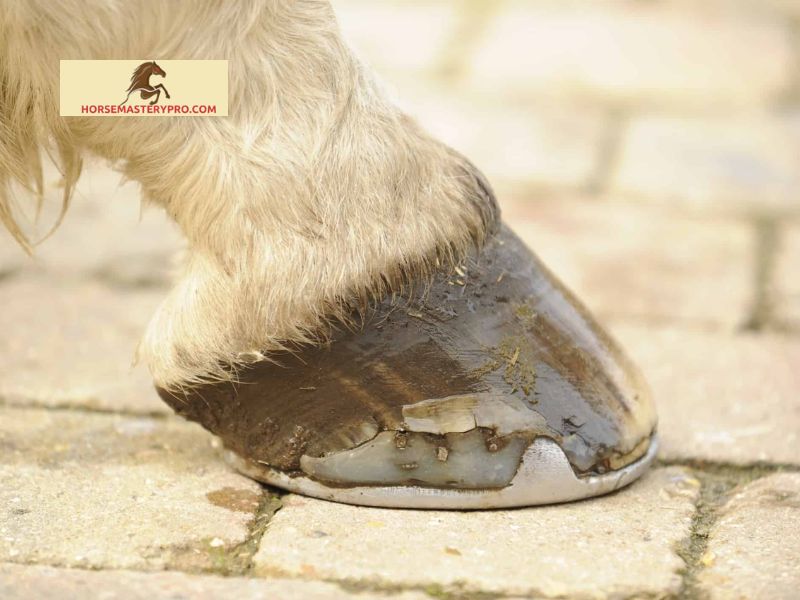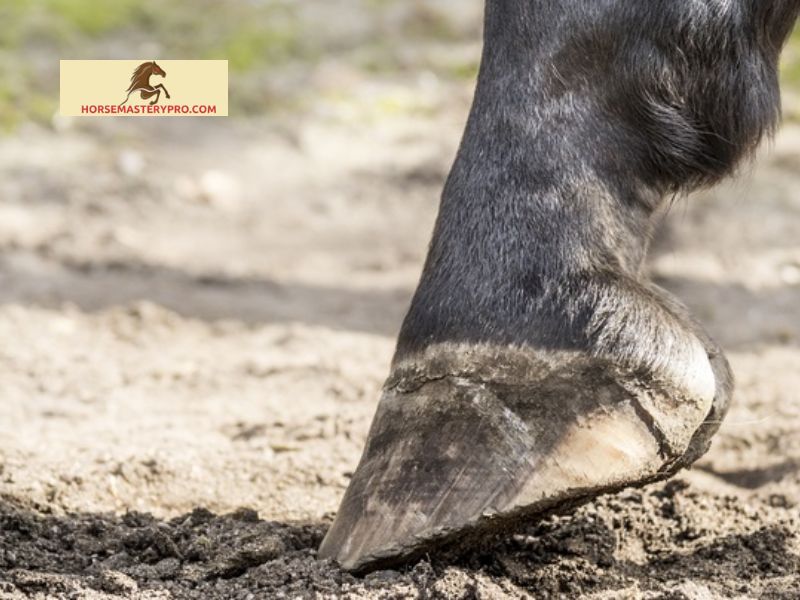Discover effective treatments for cracking hooves in horses. Consult professionals, implement corrective trimming, and address underlying conditions. Improve hoof health now!
Introduction
Do you own a horse? Then you understand the joy and responsibility that comes with caring for these magnificent creatures. However, one common problem that horse owners often face is cracking hooves. These issues can impact not only the horse’s overall health but also its performance. Today, I want to discuss the importance of addressing and preventing cracking hooves in horses, and how it can contribute to their overall well-being.
Cracking hooves are a condition that affects the hooves of horses, causing splits, fissures, or cracks to develop. This can occur due to various reasons, such as improper nutrition, poor hoof care, or environmental factors. But why is it so crucial to address this issue? Well, the hooves are the foundation of a horse’s body, just like our feet are to us. Imagine trying to run or walk with a cracked foundation – it would be extremely uncomfortable and painful, right? The same applies to horses.
Moreover, the impact of cracking hooves goes beyond mere discomfort. When a horse’s hooves are compromised, it can affect their balance and stability, leading to a decline in performance. Whether you engage in horseback riding as a hobby or participate in equestrian competitions, it is vital to ensure your horse’s hooves are in top-notch condition. By taking proactive measures to prevent and address cracking hooves, you can safeguard your horse’s health and enhance their overall performance.
In the following sections, we’ll delve deeper into the causes of cracking hooves, discuss preventive measures, treatment options, and provide additional tips for maintaining optimal hoof health. So, let’s saddle up and explore the world of cracking hooves in horses together!
Understanding Cracking Hooves in Horses

Causes of Cracking Hooves
Cracking hooves in horses can stem from various causes, and understanding them is essential for effective prevention and treatment. One primary cause is inadequate nutrition. Just like humans, horses require a balanced diet to maintain optimal health, including their hooves. A deficiency in essential nutrients, such as biotin or zinc, can weaken the hoof structure, making them more susceptible to cracks.
Environmental factors also play a significant role. Excessive moisture or prolonged exposure to wet conditions can soften the hooves, making them prone to cracking. Conversely, extremely dry conditions can lead to brittle hooves, increasing the likelihood of cracks as well. It’s crucial to strike a balance and provide a suitable living environment for your horse.
Common Risk Factors Contributing to Cracking Hooves
Certain risk factors can exacerbate the development of cracking hooves in horses. Improper hoof care is a significant contributor. Irregular trimming and neglecting proper maintenance can lead to imbalances in the hoof, putting excessive stress on certain areas and increasing the likelihood of cracks. Additionally, excessive or improper shoeing can also negatively impact hoof health.
Another risk factor is excessive workload or improper exercise. Horses that engage in intense activities without proper conditioning may experience stress fractures or hoof trauma, increasing the likelihood of cracks. It’s essential to gradually increase exercise intensity and implement appropriate rest periods to prevent overburdening the hooves.
Identifying the Signs and Symptoms of Cracking Hooves
To address cracking hooves effectively, it’s crucial to identify the signs and symptoms early on. Keep an eye out for visible cracks or splits on the hoof wall. These can range from superficial surface cracks to deeper fissures. Additionally, pay attention to any changes in your horse’s gait or lameness, as these can indicate discomfort or pain associated with cracking hooves.
You may also notice an increased sensitivity to hard surfaces or reluctance to walk on uneven terrain. If your horse displays any of these symptoms, it’s essential to consult a professional farrier or veterinarian for a comprehensive examination and diagnosis.
In the next section, we’ll dive into preventive measures that can help maintain healthy hooves and reduce the risk of cracking. Let’s explore how we can keep those hooves strong and resilient!
Preventive Measures for Cracking Hooves

When it comes to preventing cracking hooves in horses, taking proactive measures is key. By implementing the following preventive measures, you can significantly reduce the risk of your horse developing this issue and ensure their hooves remain strong and healthy.
A. Proper nutrition and diet for hoof health
Just like humans, horses require a balanced diet to maintain optimal health, including their hooves. Ensure your horse’s diet includes essential nutrients such as biotin, zinc, copper, and amino acids, which are crucial for hoof strength and growth. Consult with a veterinarian or equine nutritionist to develop a diet plan tailored specifically to your horse’s needs.
B. Regular and appropriate hoof trimming and maintenance
Regular hoof trimming is essential to prevent cracking hooves. Engage the services of a professional farrier who can trim your horse’s hooves on a regular basis. Proper trimming helps maintain the correct hoof shape and balance, reducing the risk of cracks. Additionally, be sure to address any signs of overgrowth promptly to avoid imbalance and stress on the hooves.
C. Providing a suitable living environment for horses
The living environment plays a significant role in hoof health. Ensure your horse has access to a clean and dry paddock or pasture. Excessive moisture can soften the hooves, making them more prone to cracks. Similarly, overly dry conditions can cause the hooves to become brittle. Regularly remove manure and provide adequate drainage to create a suitable environment for your horse.
D. Ensuring proper exercise and movement for hoof strength
Exercise and movement are crucial for maintaining strong hooves. Regular exercise allows blood flow to the hooves, promoting healthy growth and preventing stagnation. Turnout time in a spacious area allows horses to move freely, engaging their hooves and promoting natural wear. Remember, movement is nature’s way of strengthening hooves, so make sure your horse gets plenty of it.
By implementing these preventive measures, you can significantly reduce the risk of cracking hooves in your horse. Remember, prevention is always better than cure, and taking care of your horse’s hooves is an integral part of their overall well-being. In the next section, we will explore various treatment options for addressing cracking hooves should they occur.
Additional Tips for Hoof Health Maintenance

As a responsible horse owner, ensuring the ongoing health and well-being of your horse’s hooves is essential. In addition to preventive measures and addressing cracking hooves, there are several additional tips you can incorporate into your hoof care routine to maintain optimal hoof health. Let’s dive into these tips and explore how they can contribute to the overall well-being of your horse.
A. Regular Hoof Inspections and Cleaning Routines
Regularly inspecting your horse’s hooves is crucial for identifying any potential issues early on. Set aside time each week to thoroughly examine the hooves, looking for any signs of cracks, infections, or abnormalities. Pay attention to the frog, sole, and hoof wall. If you notice any concerns, consult with a professional farrier or veterinarian for appropriate action.
Alongside inspections, establishing a regular cleaning routine is equally important. Use a hoof pick to remove any debris, dirt, or stones lodged in the hooves. Cleaning the hooves not only promotes hygiene but also allows for better ventilation, reducing the risk of infections and other hoof-related problems.
B. Utilizing Protective Measures for Hooves during Various Activities
Horses engage in a variety of activities, from regular exercise to participating in competitions. It’s crucial to protect their hooves during these activities to minimize the risk of cracking or other injuries. Consider using hoof boots or protective wraps to provide an extra layer of support and cushioning. These protective measures can help absorb shock and prevent excessive wear and tear on the hooves, ensuring their long-term health.
C. Monitoring and Managing Moisture Levels in the Hooves
Moisture plays a significant role in the health of a horse’s hooves. Too much moisture can lead to soft hooves, making them more prone to cracking, while excessive dryness can cause brittleness. It’s important to strike a balance and monitor the moisture levels in your horse’s hooves.
During wet conditions, such as rainy seasons or muddy terrain, take extra precautions to keep the hooves dry. Regularly clean and dry the hooves after exposure to moisture. Conversely, in dry climates or during hot summer months, consider applying hoof moisturizers or conditioners to maintain proper hydration levels.
D. Incorporating Hoof Strengthening Exercises and Supplements
Just like humans, horses benefit from exercise to strengthen their muscles and improve their overall health. Similarly, specific exercises can help strengthen the hooves. Incorporate exercises that promote weight-bearing on each hoof, such as walking or trotting on different surfaces, to enhance hoof strength and resilience.
Additionally, certain hoof supplements can support hoof health and growth. Consult with your veterinarian or farrier to determine suitable supplements that provide essential nutrients for optimal hoof strength. These supplements can help address any deficiencies and promote healthier, more resilient hooves.
By following these additional tips for hoof health maintenance, you can take proactive steps to keep your horse’s hooves in excellent condition. Remember, a little extra care goes a long way in ensuring the overall well-being and performance of your beloved equine companion.
Conclusion
In conclusion, addressing and preventing cracking hooves in horses is essential for their overall health and performance. By understanding the causes and risks associated with this condition, we can take proactive measures to ensure our horses’ hooves remain strong and healthy.
Cracking hooves can be effectively treated by consulting a professional farrier or veterinarian. These experts have the knowledge and experience to provide the best care for your horse’s hooves. They can recommend appropriate corrective trimming techniques to promote proper hoof growth and prevent further cracking.
Additionally, understanding the use of hoof supplements and topical treatments can aid in the healing and strengthening of cracked hooves. These products, when used in combination with proper hoof care, can provide the necessary nutrients and moisture to promote hoof health.
It is important to note that treating underlying conditions or infections contributing to cracking hooves is crucial. By addressing these underlying issues, we can effectively eliminate the root cause of the problem, ensuring long-term hoof health.
In conclusion, prioritizing regular hoof inspections, proper nutrition, suitable living environments, and exercise can contribute to the prevention of cracking hooves. By taking these preventive measures and promptly addressing any issues that arise, we can ensure our horses maintain strong and healthy hooves.
At HorseMasteryPro.com, we understand the importance of hoof health and offer comprehensive resources and guidance to help horse owners maintain optimal hoof condition. Remember, a strong foundation is key to a horse’s overall well-being. So, let’s commit to providing the best care for our equine companions and ensure their hooves remain crack-free and healthy for years to come.


